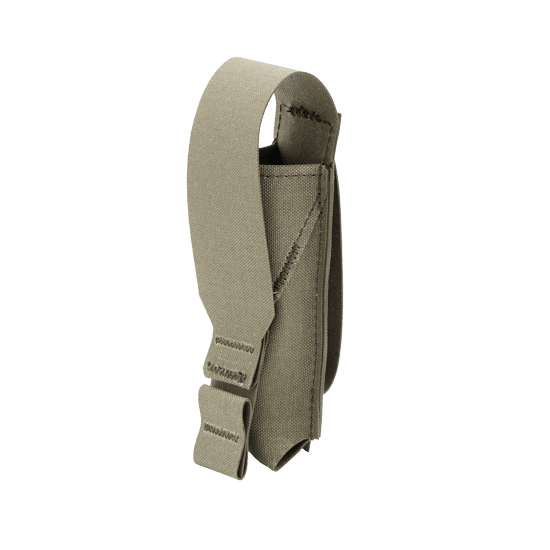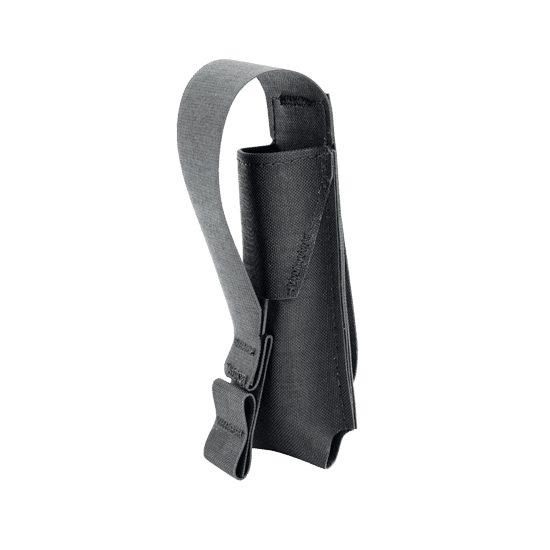The Laserluchs PICO-K9-SPOT-V1
Background to the training of dogs with lasers
Due to technological progress and the resulting increasingly powerful and robust laser systems, these can now also be used for numerous applications in technically hostile environments (dirt, water, dust, heat, cold). One of these areas of application has recently been in the training program and for training detection, hunting, rescue, protection and assistance dogs. The laser can be used to specifically mark objects and positions within the handler's field of vision. The laser gives the dog a visual stimulus and can thus be guided precisely over long distances.
The advantage of working with lasers is that you are at a distance from the dog while it is doing the actual task. This applies especially if there is a risk to people, objects to be found (e.g. evidence) or if people are denied access due to environmental conditions, e.g. in the event of a disaster or the presence of obstacles.
Depending on the specification of the laser, nearby objects, as well as distant objects, can be visibly marked and thus become an instinctual goal for the dog. Important aspects in the training of dogs are the flexibility of the laser in relation to the different distances and purposes, as well as the eye safety of humans and animals, with consistently good visibility.
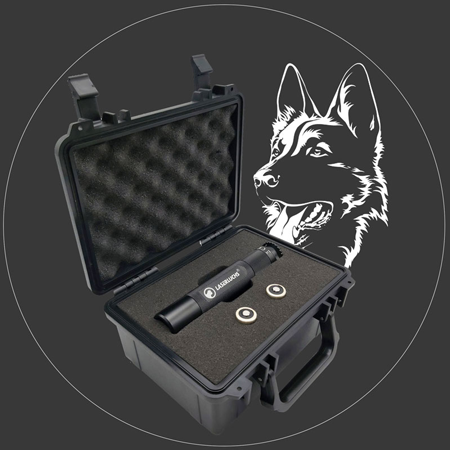
NOTES:
The laser light must be visible to both humans and dogs. When determining the optimal wavelength, the anatomy and evolutionary development of the eye are of particular importance.
Most mammals are dichromates [1,2,3] and have only 2 types of cones:
- a cone whose sensitivity is located in the short-wave range of the spectrum and which corresponds to the human blue cone, and
- a cone that is most sensitive to long-wave light (Fig. 1)
The visual pigments of these two types of cones are correspondingly referred to as SWS1 (“short wavelength sensitive 1”) and LWS (“long wavelength sensitive”). During evolution, about 30 million years ago, the red cone emerged within the human species through a duplication and subsequent mutation of the gene that is responsible for the lumbar spine visual pigment of the green cone in other mammals. The green cone exists twice, so to speak, in humans, whereby the sensitivity of the lumbar spine visual pigment of one of these cones is shifted towards longer wavelengths (perceived as red by humans).
This results in up to ten times better visibility of the green wavelength spectrum in humans than the red. The common interface when selecting a suitable laser, so that both dogs and humans can recognize it well, is the wavelength range of around 500 - 600 nm. From a technical point of view, diodes with 520 nm are ideal, as they are also more robust against external influences than the 532nm lasers used to date.
Once the dog has arrived at the marked position, it can perform a previously conditioned behavior. Working dogs are used by law enforcement, special forces, but also by commercial dog trainers worldwide to find substances and smells of all kinds. These include personal detection dogs, dogs used by police and military to find drugs, explosives or evidence, wild life detection dogs and dogs used for hunting.
The use and training of such dogs and the associated autonomous search work that is detached from the dog handler requires clear criteria for the respective task, as well as intensive training from the start.
[1] Jacobs GH (2009) Evolution of colour vision in mammals. Philos Trans R Soc Lond, B, Biol Sci 364(1531):2957–2967
[2] Kelber A, Vorobyev M, Osorio D (2003) Animal colour vision – behavioural tests and physiological concepts. Biol Rev Camb Philos Soc 78(1):81–118
[3] Peichl L (2005) Diversity of mammalian photoreceptor properties: Adaptations to habitat and lifestyle? Anat Rec A Discov Mol Cell Evol Biol 287a(1):1001–1012
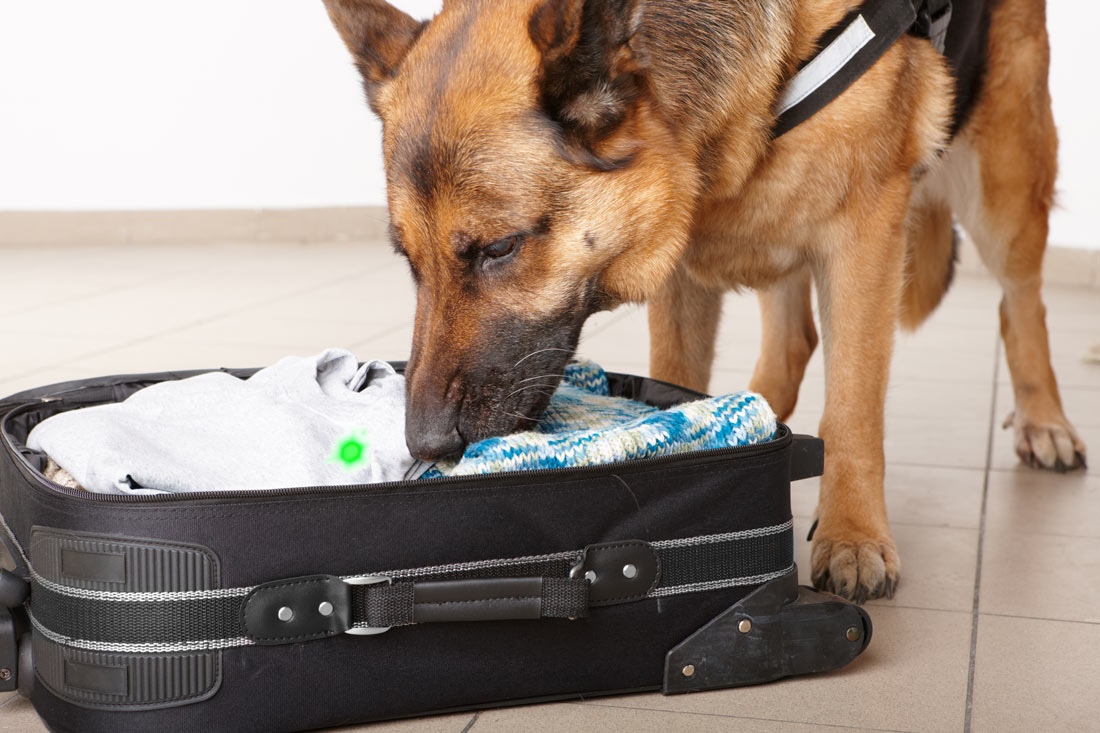
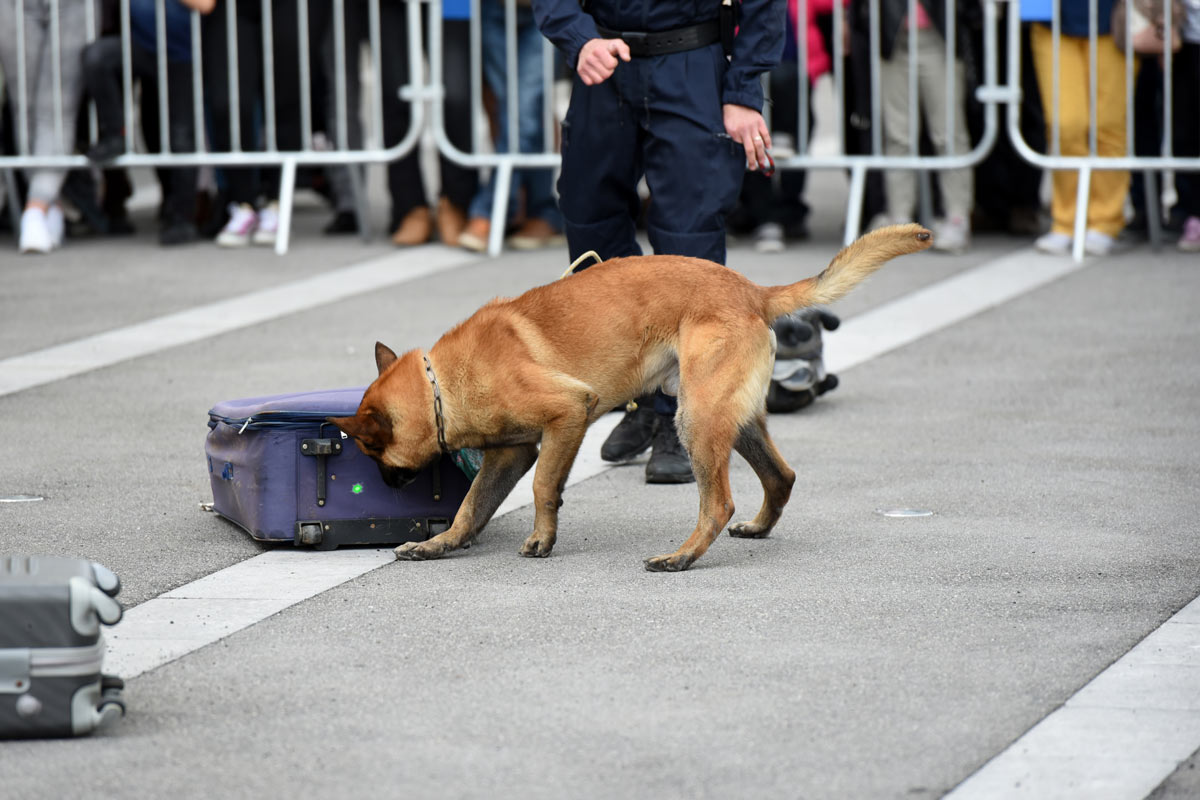
How are dogs trained with laser pointers?
Dogs respond well to distance work with the help of lasers, resulting in a well structured training. Getting used to working with the laser point can vary from dog to dog. This requires good observation of the dog's reaction and good timing when giving the reward.
At the beginning of the training it is recommended to combine known stimuli for the dog with the new, visible laser point at a shorter distance.
In order to avoid damage to the eyes, it is necessary to work with a minimal emission of light - as a matter of safety for humans, and especially for the dog, since it is closer to the laser point to fulfill the respective task and also because it could look directly at the beam. Any reflections from certain surfaces also harbor the risk of glare from scattered radiation. An intensification of this effect in the dark should also be taken into account, as the pupils of humans and animals are wider and the risk of injury is greater.
Another method of drawing the dog's attention to the light stimulus from the laser is to move the point on its own. This can be generated manually by moving the user's hand - or technically by a flashing function of the laser.
It is advisable, based on the purpose of the distance work, to analyze beforehand how much stimulus the dog needs to achieve the specific goal. If, for example, the dog is supposed to grab something at the point of the marking and retrieve it, it can be coupled with a reward that promotes the drive (toys, food).
The principle of conditioning is the combining of actions by forming sub-goals - starting with the desired behavior and then increasing the distance.
All training variants can easily be integrated into a corresponding laser training design, always individually tailored to the respective dog, and expanded to the desired distance. Depending on the purpose, height, distance or environmental conditions, the value of the stimulus and environmental conditions can be varied as desired.
Tips for training dogs with lasers:
- Based on the purpose of working at a distance, analyze how much stimulus the dog needs to complete the task.
- Link the fulfillment of the task to a resource that promotes the dedication (toys, food, etc.).
- When learning complex tasks, the link helps with behavior that is carried out after the laser point is reached. This behavior is then the „reward“. After returning to the dog handler, the dog is given the “right” reward (food, treats).
- Start training the dog with short distances and in a darker environment so that the laser provides an easily visible contrast to the surroundings.
- Make sure that the surroundings are stimulus poor, so that the dog is not distracted by other sounds or light.
- Through a neutral setup, the dog should understand the meaning of the laser point without any distractions from the surroundings.
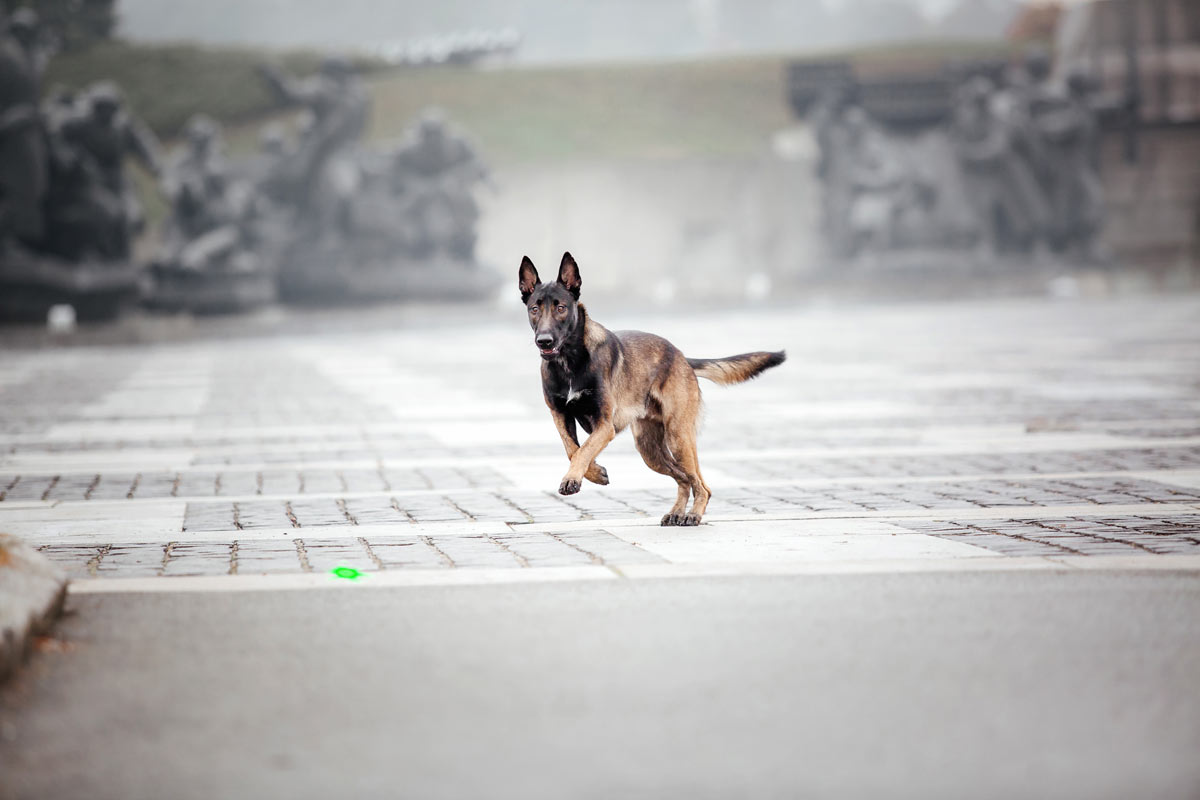
Areas of application with the PICO-K9-SPOT-V1
The management of dogs is currently mostly done through the use of low-quality lasers which are not approved in Germany and which can be ordered cheaply on the Internet. With these lasers, the power output is usually well above the permissible limit values. Additionally, the classification according to DIN EN 60825-1 mostly does not correspond to the specified parameters, so that there is a considerable risk potential for the health of the user. With law enforcement and commercial users, such lasers have long been under the supervision of laser safety officers due to their danger.
The durability and the constancy of the power of these lasers fluctuate in different temperature ranges and make the use of the laser an incalculable danger for the eyes of humans and animals. Laser protection is often neglected by professional dog trainers and dog schools due to the danger of incoherent light emanating from the laser.
The emitted light and the haptics of such mass-produced lasers are therefore not suitable for use with dogs.
For training with dogs, it is advisable to use a high-quality, precise and safety-compliant laser. The performance and characteristics can be higher or lower, depending on the application, in order to do justice to the distances and environmental conditions - as well as, if necessary, tactical conditions. In the best case, this can be done through various switchable modes and mechanical fuses to prevent accidental activation of the high output.
Picotronic closes this gap and, in cooperation with experienced dog trainers, has developed the PICO-K9-SPOT, a high-quality laser especially for use in training programs and for training detection, hunting, rescue, protection and assistance dogs.
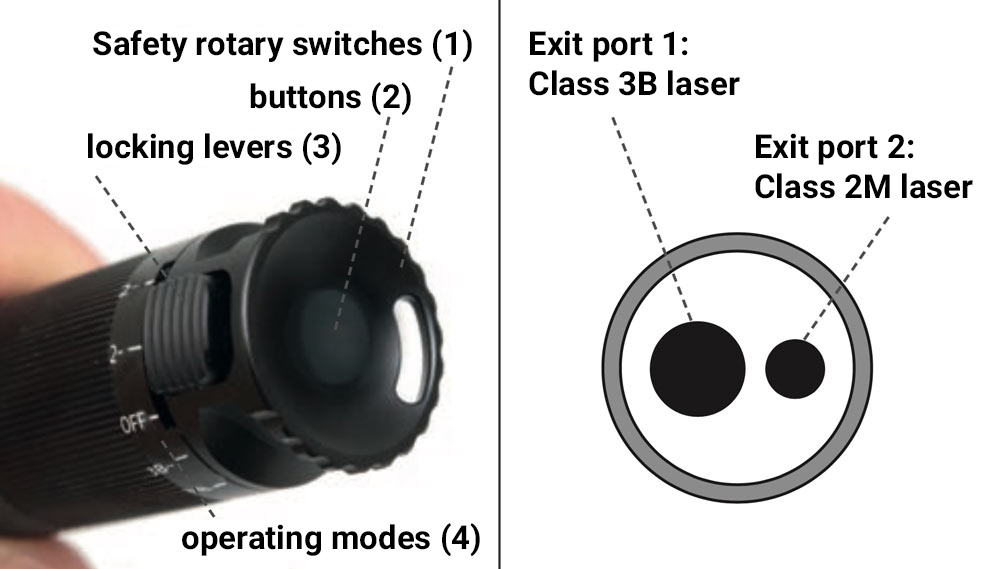
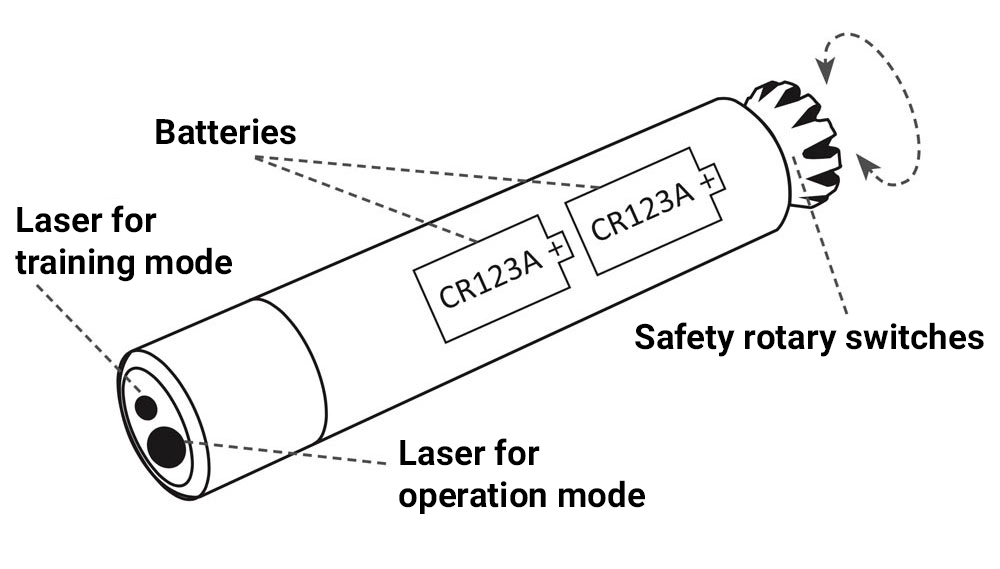
When training dogs, work is initially limited to short distances and under darker lighting conditions, which should make it easier for the dog to visualize the point of light.
A neutral training environment should make it easier for the dog to see a purpose in the laser point without being distracted by the environment, always in combination with a worthwhile reward as an instinctual goal.
The use of a powerful laser not only hinders the effect and fun at work, but also harbors health risks for humans and animals during the training phase due to possible strong glare.
For this reason, the PICO-K9-SPOT can be operated in a safe training mode with reduced power and thus enables working with the dog comfortably.
A second mode has a blinking frequency of 8 Hz, which increases the visual stimulus as well as the perception of the laser point in both humans and dogs. This takes advantage of the dog’s better ability to detect movement. This increased visibility of the light reflection is evident even in difficult terrain, e.g.underbrush.
The functionality of the laser is supplemented by two further operating modes. For the full light output of the laser, e.g. for position displays over long distances in daylight or in direct sunlight, the laser offers an "operational mode". This is secured by a special lock on the rotary switch, so that unintentional activation is avoided.
A variant with a flashing frequency of 8 Hz has also been integrated for this mode in order to be able to adapt the laser as flexibly as possible to the respective task and the prevailing environmental parameters.
The different operating modes are supplied with energy from a common source in order to keep the manufacturing effort low. In addition, the PICO-K9-SPOT has a robust black matte anodized housing, is waterproof, dustproof and shockproof.
The desired mode is selected by using a rotary switch and the set mode is activated by using an additional button. The PICO-K9-SPOT is also designed so that it can be operated comfortably with winter gloves or protective gloves.
Further innovations such as holsters, foldable filters to reduce the power, etc. enable the targeted use of a laser for the distance guidance of dogs.
In addition, we also offer custom-fit holsters:
Your contact person
Do you still have questions? We will be happy to support you.

Madlen Klötzer - Sales Manager LASERLUCHS®
Phone: +49 261 983 497-80
Email: info@laserluchs.de

